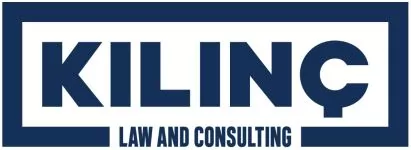INTRODUCTION
Due to the inherent dangers present in the production and work networks established by employers, work accidents can occur. In commercial companies with a wide range of operations, the consequences of work accidents can be more severe compared to smaller enterprises. Therefore, the criminal liability arising from work accidents holds greater importance for corporate commercial companies. This study will focus on determining who or what parties hold criminal liability in companies possessing legal personality when such accidents occur.
A. CONCEPTS OF OCCUPATIONAL ACCIDENT, EMPLOYER, AND EMPLOYER'S REPRESENTATIVE
According to Article 3 of Law No. 6331 on Occupational Health and Safety (“OHS Law”), an occupational accident is defined as “an incident that occurs at the workplace or due to the conduct of work, resulting in death or physical or mental impairment”. The question of who bears criminal liability in the event of an occupational accident, especially when operations are managed within the company, is evaluated within the framework of Law No. 4857 (“Labor Law”), Turkish Penal Code No. 5237 (“TPC”), the Regulation on Occupational Health and Safety dated 09.12.2003 (“Regulation”), doctrinal opinions, and the jurisprudence of the Supreme Court.
In determining who holds criminal liability in the event of work accidents, the concept of “Employer” and the identification of persons who can be considered employers are crucial. According to the first paragraph of Article 2 of the Labor Law, “a real person employed under a labor contract is a worker, and a real or legal person, or institutions and organizations without legal personality that employ workers” are defined as employers. On the other hand, the employer's representative is defined in the fourth paragraph of the same article as “persons who act on behalf of the employer and take part in the management of the work, workplace, or business.” Based on this definition, persons such as general managers, supervisors, or commercial representatives who act on behalf of the employer in managing the business may be considered as employer's representatives. All responsibilities and obligations imposed on the employer by the Labor Law will also apply to these persons under the fifth paragraph of Article 2 of the Labor Law.
B. CRIMINAL LIABILITY OF BOARD MEMBERS WITHIN THE SCOPE OF OCCUPATIONAL HEALTH AND SAFETY
According to the principle of “personal liability” in Turkish law, legal entities such as joint-stock companies do not bear criminal liability. Therefore, in cases of criminal liability arising from work accidents, the responsibility will fall on the real persons managing the joint-stock company. According to established jurisprudence of the Supreme Court, when an employee of a joint-stock company is involved in a work accident, it is necessary first to identify the persons authorized to manage the company and determine the company's organizational chart.
In its decision dated 28.02.2018, numbered 2016/6214 E. and 2018/2278 K., the 12th Criminal Chamber of the Supreme Court stated:
“Given that the defendant declared that they had no responsibility for the work and production, it is necessary to determine first who the responsible official of the company was. Therefore, the workplace management chart and the trade registry records of the company at the time of the crime should be obtained, all relevant persons should be heard, their roles in the workplace and the accident should be determined, and the defendant's position, duties, and responsibilities in the company should be identified. Additionally, the determination of who was authorized to take occupational health and safety measures at the company and the opening of a case against these individuals should be ensured. The defendant's legal situation should be assessed and determined accordingly, taking into account the opinions of a board of occupational safety experts and, if necessary, conducting an on-site investigation.”
In this context, determining the responsibilities of board members requires considering the company's organizational chart and ensuring that the chart aligns with actual management.
Once the duties and authority of the board members are identified, the liability of the employer's representatives should be examined. The board of directors appoints employer representatives and occupational health and safety specialists to the company's businesses and workplaces. In the event of a work accident, the responsibility of the employer's representatives in the lower units of the organizational chart must also be reviewed. In practice, it is observed that employer representatives are sometimes appointed by the chairman of the board. If the employer representative is appointed by the chairman of the board, the chairman's responsibility for determining criminal liability will include evaluating whether the chairman exercised due diligence in selecting these representatives and monitoring their actions after appointment.
In its decision dated 25.01.2018, numbered 2016/2870 E. and 2018/916 K., the 12th Criminal Chamber of the Supreme Court stated:
“Given that the defendant was authorized to make decisions regarding employment contracts, their termination, and notifications to the Social Security Institution and all official institutions, to take all necessary measures regarding worker health and safety at the workplace, to make changes in the business for this purpose, to negotiate and enter into contracts regarding occupational safety on behalf of the company, to represent the company before official institutions, and to sign accident reports, it was understood that these powers were vested in the defendant alone and that other board members did not have the authority to represent the company in these matters. However, considering that there is no determination in the file regarding whether the defendant appointed as the site manager for the dyeing section of the factory had the necessary knowledge, experience, and qualifications to carry out the assigned tasks, it is necessary to investigate the educational background and professional qualifications of the person appointed as the site manager. Based on this determination, the legal situation of the defendant, who was the chairman of the board,should be assessed and determined accordingly.”
To exonerate a board member from responsibility based on the actions of an employer representative, the following should be ensured:
- An organizational chart is established by drafting an internal directive and delegating authority within the company.
- Positions responsible for ensuring occupational health and safety (e.g., occupational health and safety specialists, mining engineers, electrical engineers) are created within the organizational chart, and it is clearly stated in the job descriptions that these positions are responsible and authorized to ensure occupational health and safety.
- Board members do not have any duties or authority regarding occupational health and safety.
- The personnel authorized to ensure occupational health and safety are trained and specialized in their respective areas (this is crucial for proving that the board exercised due diligence in selecting these personnel).
In Supreme Court's decisions regarding criminal trials due to work accidents, if it is determined that the employer representative was selected in accordance with the required criteria, the criminal liability arising from the accident will be attributed to the employer representative. However, if there are deficiencies in occupational health and safety that are directly attributable to the decisions, practices, or negligence of the company's management, the responsibility of the chairman of the board will be primarily examined. Indeed, under Article 6 of the Regulation, it is clear that the employer is obliged to take all necessary measures, including the prevention of occupational risks, the provision of training and information, organizing, and providing the necessary tools and equipment to protect the health and safety of employees.
Moreover, in its decision dated 17.11.2016, numbered 2014/3129 E. and 2016/8775 K., the 15th Criminal Chamber of the Supreme Court stated:
“…In cases where there are multiple representatives of a legal entity, criminal liability will belong to the legal representative who knows the details and played a role in the occurrence of the offense, considering the weight and boundaries of the distribution of representational authority in accordance with the principle of ‘personal liability.' The mere fact that the defendant is the chairman of the board of directors does not alone constitute evidence of participation in the crime.”
It is clearly stated that being a shareholder, a board member, or the chairman of the board does not, by itself, indicate responsibility arising from work accidents.
In this context, when evaluating the criminal liability of board members, the following factors should be considered in order:
- Identifying the person responsible for the business unit where the accident occurred.
- Determining whether the company's organizational chart and internal directives align with the actual situation.
- Evaluating whether the board of directors fulfilled its obligations regarding the appointment, authorization, and supervision of the responsible person in the business unit, and determining the legal situation of the board of directors accordingly.
In practice, when determining criminal liability, the organizational structure of the company and the roles, responsibilities, and areas of authority of the individuals within this structure are assessed to apportion fault and apply sanctions accordingly. In its decision dated 20.02.2015, numbered 2014/9496 E. and 2015/3127 K., the 12th Civil Chamber of the Supreme Court ruled:
“In the case where the deceased, who was employed as a worker at a construction site managed by …. Inc., chaired by the defendant, was injured when a paving stone fell on his foot while carrying paving stones and later died without recovering; the defendant stated in his defense at various stages that their company had 40-50 construction sites, each with its own separate authorized and responsible person, that the site engineer named … was the site supervisor at the location where the incident occurred, and that he himself had never visited the site where the incident took place. Considering that the aforementioned … stated in his testimony that he was the responsible engineer at the site where the incident occurred and that a conviction was made against him, it was ruled that the site supervisor engineer, who was competent in his job, was responsible for taking safety measures, and thus, there was no fault attributable to the defendant. Consequently, it was deemed legally incorrect to convict the defendant based on an expert report assigning blame to him instead of acquitting him.”
This ruling shows that in cases where employer representatives with the necessary qualifications have been appointed, the responsibility of the board chairman does not arise. If the company delegates management authority to various individuals through an internal directive with specific positions and job descriptions, it is crucial to clearly define the duties and authorities assigned to these individuals to limit the criminal liability of the board chairman.
C. CONCLUSION
In conclusion, if a work accident results in bodily harm to an employee, both the legal and criminal liability of the board members may be implicated. The criminal liability of the board resulting from a work accident will be proportional to their faults and the damages caused to the company. Therefore, the company's management structure and organizational chart must be examined. The person responsible for the work unit where the accident occurred might be held liable as the employer's representative, akin to the employer. However, it is crucial that the internal directives and organizational chart match the actual situation on the ground. Determining which board member is responsible will depend on the nature of the work accident, any fault attributable to the employee, expert reports during the trial process, the workplace organizational chart, the division of duties among the board members, internal directives, how decision-making processes related to the accident were managed, and who among the board members selected and appointed the occupational health and safety experts.
The content of this article is intended to provide a general guide to the subject matter. Specialist advice should be sought about your specific circumstances.






